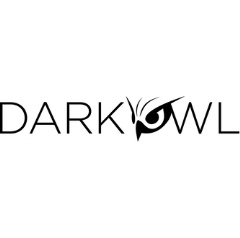DarkOwl Releases Research on the Darknet Threat to Election Security and the Digital Economy of Disinformation
In previously published analysis, we outlined the economies of social media and disinformation-as-a-service on the darknet, highlighting how there is now a significant ecosystem across the underground internet feeding the enterprise of mis-and disinformation for financial profit and political gain.
With the 2020 Presidential and General Election rapidly approaching, we decided to take a closer look in this report at the vulnerabilities to election security openly discussed on the darknet, including voter registration data and security risks to ballot tallying technologies, along with recommendations on the remediation both concerned individuals and state election officials can take.
Editors Note: DarkOwl is politically neutral and has no intention to further promote misinformation that the upcoming U.S. election is in jeopardy with increased use of mail-in ballots, but instead using a wide-body of intelligence, primarily captured by the companyís 24/7/365 crawls of the darknet and deep web, seeks to inform and educate the public and the information security community of information available on the darknet and our subsequent intelligence findings and recommendations.
Ballot Tallying Technology Discussions on the Darknet
PRIMER ON ELECTION TECHNOLOGIES
Election day ballot marking and tallying technology in use widely varies from state-to-state:
Optical Scan Paper Ballot Systems
These include both mark sense and digital image scanners where voters manually mark paper ballots that are hand fed into and tabulated with these scanners at the polling location or transferred to and collated at a centralized location.
Direct Recording Electronic (DRE) Systems
These use touchscreen terminals to record the votes, which are stored in the deviceís internal memory and then transferred to a centralized location for tabulation. Some of these systems use internal modems for wireless data transmission. Most DREs include a paper receipt or ballot of the voterís selection, but as many as 15 states have districts that use DREs without paper trail.†
Ballot Marking Devices (BMD) and Systems
These are designed to help disabled voters who might be unable to vote using other methods. Some of these devices include a touchscreen interface with audio and other features similar to DREs.
Punch Card Voting Systems
These require the voter to punch holes in cards using a supplied punch device. Cards are then feed into a computerized vote tabulating device or counted manually in a ballot box. These systems are less common in the U.S.
Please see our full research†here: https://www.darkowl.com/blog-content/digital-economy-of-disinformation-darknet-threat-to-election-security
†
( Press Release Image: https://photos.webwire.com/prmedia/58814/265974/265974-1.png )
WebWireID265974
- Contact Information
- Kim Ketchel
- Director of Marketing
- DarkOwl
- kim.ketchel@darkowl.com
This news content may be integrated into any legitimate news gathering and publishing effort. Linking is permitted.
News Release Distribution and Press Release Distribution Services Provided by WebWire.
